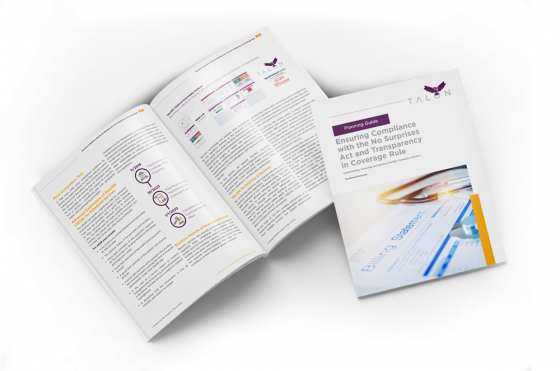By Christopher Matrumalo, VP of Marketing, MMS Analytics, Inc.
I give a lot of presentations—easily hundreds and perhaps even thousands each year for the past several years now. I field a LOT of questions from my audiences. Still today, I find myself amazed at how effective the healthcare industry has remained in perpetuating misconceptions and keeping people in the dark about their dirty business.
This week I had the pleasure of presenting to a room of employer owners, executives, and HR leaders in Salt Lake City, UT with two primary goals for the seminar. The first was to teach them about the secret contracts between insurers and providers that are driving the unsustainable increases in healthcare costs we’ve all witnessed over the past two decades. The second was to attempt to shed some light on the new 219-page federal mandate on employers and their insurance issuers to provide all of their members with a robust medical price transparency solution.
These were complex topics including a great deal of nuance. I was allotted 20 minutes to get it done.
Presenting to achieve that first goal is something I’m pretty well-practiced in. But adding in a deep dive on the new federal Transparency in Coverage rule as a topic to cover was new—this week’s seminar marked the first time I’d talked about the landmark mandate from a podium. And with the new content thrown into the mix, something had to give.
As it turned out, there were a few somethings that had to give in order to make enough time to cover the new rule responsibly. One of those was a slide that I typically cover in great depth, even belaboring it, lest its full consequence be lost on my audience.
What you see above is a table that highlights the massive price variation between the low-cost and high-cost providers across nine common medical procedures in a given geography (in this case, the data was compiled for my audience in Salt Lake City).
Pretty stark numbers. A quick glance reveals that something totally routine like a chest x-ray might cost $33 at one provider or $135 at another. The variation for a simple cholesterol screening test is even more eye-popping: $7 at the lowest-cost provider and $71 at the most expensive one, a 1,014% price variation.
During my seminar this week I paused on this slide momentarily, scanned the room and detected the surprised faces and shaking heads I’m accustomed to seeing in reaction to this revelation, and I moved on to the rest of the presentation.
Fast forward about an hour, past my completed presentation and on to the open Q & A segment of the subsequent panel discussion that featured my company’s CEO, our Head of Data Analytics, and the CEO of one of our third-party administrator partners. The panel discussion was incredibly interesting—a unique blend of storytelling about secret White House meetings, revelations of single sentences hidden among 219 pages of federal agency rulemaking that could change the course of the entire industry, and ruthless haymakers landed on industry players not present to at least attempt to feebly defend themselves.
And yet, an audience member’s question near the end of the event suggested that he had been unmoved by this dynamic panel discussion and that he was still stuck on a slide that I had glossed over about an hour earlier.
“This is all well and good,” he said, “but the reality is that we all choose a network. We buy in to a network when we buy our health insurance plans, and then the price is the price for our employees no matter which provider they go to for a given service. And maybe we purchased the wrong health plan, but once we have that health insurance, they’ve negotiated the discount and we just get what we get.”
And about ten words into his comment, I realized that I’d made a huge mistake. In the interest of time I had painted broad strokes across a critical detail and left at least one member of our audience (and probably a bunch more) unenlightened to the important truth.
Your health insurance carrier negotiates thousands of different rates for the medical tests and procedures you receive. For each test, they negotiate A DIFFERENT PRICE with each provider! And without knowledge of those different negotiated prices ahead of time, even the fully insured patient is basically playing roulette when receiving care—in about a month you might get a bill for $239 for your knee MRI, or you might get a bill for $1,208. And while you might feel pleasantly surprised or totally disgusted by the bill that shows up in your mailbox, you’ll usually never even know if you even got a “good” price or not. We’re all left in the dark, wondering whether we were treated fairly by a medical system we’re supposed to blindly trust or if we just got taken for a ride.
And of course, every time an employee pays five times more than they need to for an MRI, those unnecessary dollars jack up the claims cost for the group and increase premiums for fully insured groups too.
There are times when I wish I could simplify my presentations and neglect some of the nitty-gritty details that I take for granted we all must understand by now. And then I’m reminded that there are billions and billions of dollars being spent on lobbying and marketing by the entrenched industry players, bludgeoning the public with the notion that the healthcare system has the plan members’ best interest at heart.
And then I’m shocked back into the reality that we have a lot of education left to do.







